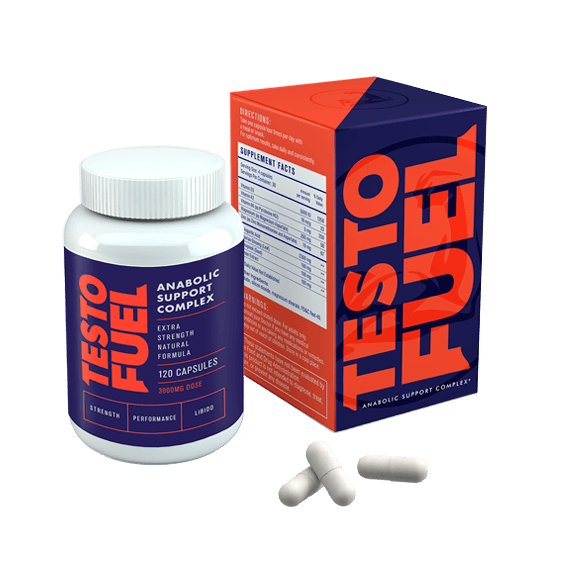Testosterone Injections: Know the Risks and Health Effects!
U.S. doctors wrote over four million prescriptions for testosterone therapy in 2016.
Injecting T is still on the rise today, promising an elixir of life for men hit by hypogonadism.
But, there’s things to consider before drawing a dose, painfully jabbing and instantly reclaiming youthful vigor – some of the risks are irreversible and dangerous.
Thinking of trying testosterone yourself? Know the risks and health effects first.
What is testosterone?
Testosterone (T) is a naturally occurring sex steroid and androgen hormone with a long list of health functions.
A lot of people think T is only good for muscle building and aggressiveness – but there’s much more to the potent hormone than gym-floor rumors will have you believe.
There’s no solid evidence that testosterone increases bad behavior in people without preexisting personality traits.
Did you know that testosterone promotes red blood cell production? How about its impact on prostate cancer risk and fertility?
Men produce T primarily inside their testes, with trace amounts created in the hypothalamus and pituitary gland.
Women, on the other hand, produce testosterone in their ovaries and adrenal glands, albeit in much smaller amounts.
- Normal levels for men range between 300-1000 ng.dL.
- Healthy levels for women should sit between 15-75 ng.dL.
A healthy hormone balance can help you experience a greater quality of life. Understanding the roles of testosterone is important at all ages.
Testosterone’s role in men[1]:
- Muscle mass & strength
- Bone density
- Energy
- Sexual function
- Libido
- Fertility
- Mood
- Assertiveness
- Voice deepening during puberty
- Development of facial, pubic, and body hair during puberty
Testosterone’s role in women:
- Growth of reproductive tissue
- Bone mass
- Fertility
- Energy – red blood cell production
Low testosterone in men
A man’s testosterone levels take a sharp increase during puberty and hit their apex around age 19.
They then level out and thrive throughout his 20s and potentially later depending on genetics and health.
Unfortunately, at age 30, your T production typically starts a natural decline at around 1% per year.
You might not feel much difference at first, but eventually the masculine traits that testosterone promotes start to diminish.
Age-related testosterone deficiency is usually more apparent in older men.
This is partly why millions of them are turning to TRT in the hopes of reclaiming their lost vigor.
Yet, clinicians aren’t always keen to prescribe testosterone injections to treat hypogonadism due to aging.
Testosterone levels below 300 ng.dL are considered low.
Hypogonadism is the proper term for T deficiency and depending on circumstance, can be treated with testosterone replacement therapy (TRT).
Side effects can range from tiredness and brain fog, through to more serious cases of increased risk of heart disease, diabetes, and sexual dysfunction.
Symptoms of low testosterone include[2]:
- Muscle loss
- Frailty
- Reduced bone mass
- Tiredness
- Low libido
- Erectile dysfunction
- Infertility
- Irritability
- Anxiety and/or depression
- Brain fog
- Fat gain and obesity
- Poor sleep
- Increased risk of heart disease, metabolic disorders, and diabetes
What is testosterone injection?
When most men think about testosterone replacement therapy (TRT), they picture a doctor stood tapping air bubbles out of a syringe, ready to inject synthetic testosterone into muscle.
Because while TRT comes in various forms from gels to patches, injections are still one of the most popular prescriptions.
Testosterone injections aren’t doses of the natural, organically produced hormone. The testosterone used is a synthetic, lab-created version, which acts like T and restores levels so they’re no longer deficient.
TRT fills the void of a hormone you no longer create yourself and does increase natural testosterone production. It’s incredibly important that all users understand this.
Injections are administered directly into muscle tissue – the buttocks being a common spot. You’ll usually need to receive them every two to four weeks, depending on dosage and doctor’s discretion.
You should also be asked to stay in a health care setting for at least 30-minutes to check for any immediate side effects or allergic reactions.
Abusing testosterone injections can have serious and sometimes irreversible side effects. It’s not uncommon for TRT abusers to have to undergo lifetime treatment after turning off their own natural production.
Women who misuse testosterone may also cause permanent masculine changes to their body. It is illegal to buy or take testosterone that hasn’t been prescribed to you specifically by a registered medical professional.
The use of testosterone injections is also banned in many competitive sports – check with your governing body before competing under the influence of TRT. You may still be breaking the roles even if you have a prescription.
Usage & Dosage
Hypogonadism is the primary condition treated with testosterone injections. By helping men increase their T levels there’s a possibility they’ll reduce the symptoms caused by low testosterone.
TRT users often find their energy increases, libido is reignited, and overall quality of life improves.
After all, once there’s testosterone present to attach to androgen receptors and, many functions stopped by deficiency are triggered to start again.
If you’re using TRT to recover from hypogonadism, you may notice you can build muscle mass and drop body fat easier.
Significant changes in body composition can typically take around three to five months to appear.
Other uses of testosterone therapy include treating breast cancer and delaying puberty in younger boys.
Once the cancer is treated and puberty is induced, it isn’t always necessary to continue using TRT.
Testosterone injection dosage can change depending on product, patient age/sex, and condition. However, there are usual doses most patients can expect to receive.
Usual Adult Dose for Male Hypogonadism
- Testosterone Undecanoate: 750 mg (3 mL) IM injection followed by 750 mg (3 mL) injected after 4 weeks, then 750 mg (3 mL) every 10 weeks thereafter
- Testosterone Enanthate and Cypionate: 50 to 400 mg IM injection every 14 to 28 days
Usual Adult Dose for Breast Cancer-Palliative
- Testosterone Enanthate: 200 to 400 mg IM injection every 14 to 28 days
Usual Pediatric Dose for Delayed Puberty – Male
- Testosterone Enanthate: 50 to 200 mg every 14 to 28 days for 4 to 6 months
Side effects
Injecting testosterone isn’t without its risks. Side-effects are always possible, and you can overdose from doing so.
If you’re taking TRT legally under the supervision of a doctor you’re very unlikely to consume too much. Your prescription should be tailored to your own body type and needs in accordance to safety guidelines.
However, side-effects can happen to any user at any time. Stay vigilant and seek medical help if you experience any complications.
Lower-severity side-effects include:
- Testicular atrophy (shrinkage)
- Acne and oily skin
- Enlarged breasts
- Pain and bleeding from injection site
- Mood swings
- Weight gain
- Back and joint pain
- Headaches
- Development of masculine characteristics in women (facial hair, voice deepening, clitoris enlargement)
- Voice deepening
- Hoarseness
Higher-severity side effects include:
- Difficulty breathing
- Sleep apnea
- Complete stoppage of natural testosterone production
- Infertility
- Overly frequent and/or extended erections
- Jaundice (yellowing of skin and/or eyes)
- Abdominal pain (upper-right area especially)
- Difficulty urinating
- Swelling of hands, feet, and lower legs
- Nausea and/or vomiting
- Mood swings
- Depression and anxiety
- Suicidal thoughts
- Bouts of anger/uncontrollable aggressiveness
If you experience any of the above symptoms seek medical attention immediately. Some side-effects can be life threatening and/or irreversible.
FAQs
How do you take testosterone injections?
In most cases a doctor will inject synthetic testosterone into muscle tissue using a needle.
Sometimes you may be given the treatment to inject yourself under the doctor’s guidance.
See the Usage & Dosage section above for further details on injection frequency.
Will testosterone injections treat erectile dysfunction?
Yes – only if hypogonadism is a leading contributor to your condition.
Although erectile dysfunction is a symptom of low testosterone, it can be caused by other factors.
A doctor may wish to speak with you further before prescribing TRT.
When will I see improvements after testosterone injections?
Many men see improvements in hypogonadism symptoms in as little as four to six weeks.
However, for things such as muscle mass and fat loss, it may be three to six months.
Can I buy testosterone injections?
It is illegal to purchase testosterone injections without a prescription.
Doing so is against the law and may result in criminal prosecution.
If you feel you’d benefit from taking TRT speak to your doctor for a professional opinion.
What happens when I stop taking testosterone injections?
You may experience withdrawals once you stop taking testosterone injections. These may include; insomnia, irritability, loss of appetite, and lower libido.
There’s also a chance your natural testosterone production may have stopped permanently.
During TRT treatment, your pituitary gland senses healthy levels of the hormone in your bloodstream, so stops telling the testes to create more.
As a result, the process of producing your own natural testosterone can be shut down permanently.
Your doctor should speak to you about these risks before prescribing you testosterone injections. A possible side effect of TRT is irreversible infertility.
Conclusion
Millions of men are turning to testosterone injections to sidestep the symptoms of low testosterone. Women are taking them too, to help battle breast cancer and rebalance their hormones.
But, while TRT might promise to reunite you with missed youthful vigor and reignite your libido, it can come at a cost.
Side-effects are always possible and can cause severe life-threatening complications.
In some cases, the consequences of using testosterone injections can be irreversible, impacting life after treatment too.
Make sure you are well-informed of the risks before accepting a prescription and only receive treatment from a reputable doctor.
The long-term health effects of taking testosterone injections is still unknown – yet many experts believe them to be relatively safe.
It’s up to you to make a well-informed choice based on weighing up the risk versus reward.



